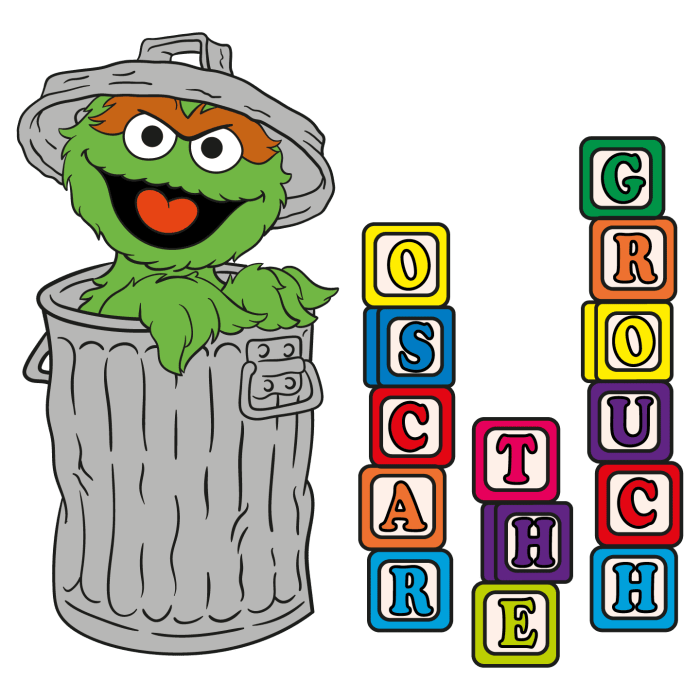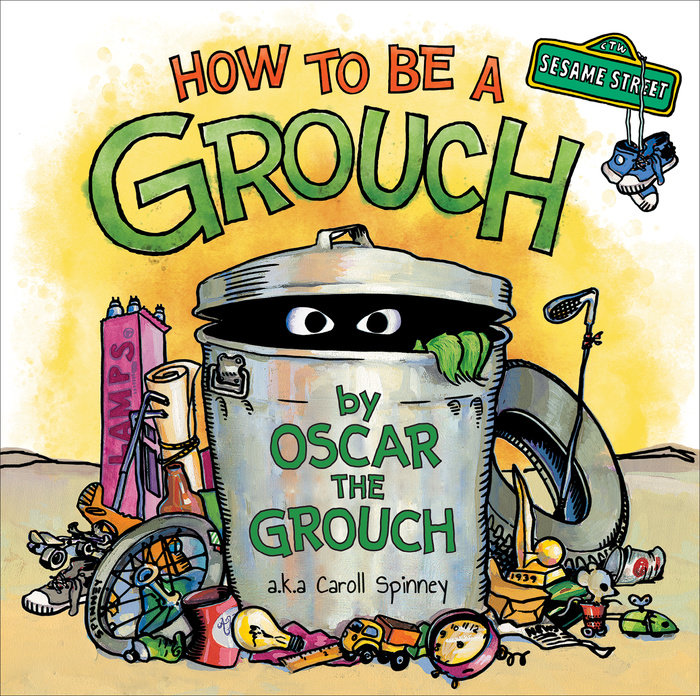The Grouch and the Brainstorm sets the stage for an intriguing exploration into the complex dynamics between negativity and innovation. This narrative delves into the enigmatic character of the Grouch, whose pessimistic outlook and critical thinking skills create a unique tension within the collaborative brainstorming process.
As we unravel the Grouch’s personality and the nature of brainstorming, we will examine the potential challenges and benefits of his participation in idea-generating sessions. Through practical strategies and insightful analysis, we will uncover the ways to harness his critical perspective while fostering a positive and inclusive environment.
The Grouch’s Personality

The Grouch is a well-known character who embodies grouchiness, cynicism, and pessimism. His personality traits significantly impact his interactions with others and his overall outlook on life. Understanding the underlying reasons behind his negative disposition can shed light on his behavior and provide insights into the complexities of human nature.
Negative Disposition
The Grouch’s negative disposition is evident in his constant complaints, criticisms, and pessimistic outlook. He finds fault in almost everything, rarely acknowledging the positive aspects of life. His cynical nature leads him to believe that the world is inherently flawed and that nothing good can come of it.
This negative bias colors his perceptions and interactions, creating a barrier between him and others.
Underlying Factors
The Grouch’s negative disposition may stem from various factors, including past experiences, cognitive biases, or underlying psychological issues. Negative experiences in his life may have shaped his pessimistic outlook, leading him to expect the worst in every situation. Cognitive biases, such as confirmation bias, may also contribute to his tendency to focus on negative information and ignore positive evidence.
Additionally, underlying psychological issues, such as depression or anxiety, can manifest in negative thinking patterns and a pessimistic outlook.
The Brainstorm’s Nature

Brainstorming is a collaborative problem-solving technique that emphasizes the generation and evaluation of ideas. Its purpose is to produce a wide range of potential solutions to a specific issue or challenge.
The brainstorming process typically involves several stages:
- Idea Generation:Participants are encouraged to share any and all ideas, regardless of their perceived feasibility or practicality. The focus is on quantity rather than quality at this stage.
- Evaluation and Selection:Once a sufficient number of ideas have been generated, they are evaluated and discussed. Participants may use various criteria to assess the ideas, such as feasibility, potential impact, and alignment with the problem statement.
- Refinement and Improvement:Selected ideas are further developed and refined through discussion and collaboration. Participants may combine or modify ideas to create more robust and innovative solutions.
For brainstorming to be successful, it is essential to foster an open-minded and supportive environment. Diversity of perspectives and experiences among participants can lead to a wider range of ideas and more creative solutions.
The Grouch’s Role in the Brainstorm

Incorporating a grouch into a brainstorming session may appear counterintuitive, yet their unique perspective and critical thinking abilities can yield unexpected benefits. However, their negative outlook and tendency to stifle creativity must be carefully managed to maximize their contributions.
The grouch was grumbling and the brainstorm was bustling. I needed a break, so I looked up just mercy summary chapter 14 to clear my head. The story of Bryan Stevenson’s fight for justice was inspiring, and it reminded me that even in the face of adversity, we can make a difference.
With renewed determination, I returned to the grouch and the brainstorm, ready to tackle any obstacle that came my way.
Challenges of the Grouch’s Participation
The Grouch’s negativity can hinder the brainstorming process by:
- Discouraging Participation:Their critical nature may discourage others from sharing ideas, fearing ridicule or judgment.
- Stifling Creativity:The Grouch’s tendency to focus on flaws can suppress innovative thinking and prevent the exploration of unconventional ideas.
Benefits of the Grouch’s Participation
Despite these challenges, the Grouch’s participation can also bring advantages:
- Critical Analysis:The Grouch’s critical thinking skills can identify weaknesses and potential pitfalls in ideas, ensuring a thorough examination of their feasibility.
- Alternative Perspectives:Their negative outlook can provide a different angle, challenging assumptions and fostering a more comprehensive understanding of the problem.
- Objectivity:The Grouch’s lack of emotional attachment to ideas allows them to evaluate proposals objectively, avoiding biases that may hinder others.
Strategies for Managing the Grouch in Brainstorming

Effectively managing the Grouch in brainstorming sessions requires a delicate balance of mitigating their negative influence while valuing their potential contributions. Here are some practical strategies to consider:
Establishing Ground Rules
- Clearly define expectations and ground rules for respectful communication and open-mindedness.
- Encourage active listening and discourage interruptions.
- Establish time limits for individual contributions to ensure everyone has a chance to participate.
Fostering a Positive Environment
- Create a welcoming and supportive atmosphere where ideas are valued and constructive feedback is given.
- Acknowledge and appreciate the Grouch’s contributions, even if they are negative, to show that their perspective is respected.
- Use humor and levity to diffuse tension and encourage a more positive mindset.
Encouraging Open Communication
- Provide multiple avenues for participation, such as written submissions, anonymous idea boxes, or online platforms.
- Use brainstorming techniques that emphasize divergent thinking, such as mind mapping or forced connections.
- Facilitate group discussions that encourage respectful dialogue and exploration of different perspectives.
Mitigating Negative Influence
- Address negative comments directly but respectfully, focusing on the idea rather than the person.
- Use “yes, and” techniques to build on negative ideas and transform them into positive ones.
- Assign the Grouch a specific role, such as “devil’s advocate,” to channel their skepticism in a constructive way.
The Grouch’s Potential Impact on the Brainstorm’s Outcome

The Grouch’s participation in a brainstorming session can have both positive and negative effects on the outcome. His critical thinking skills and negative perspective can lead to both more refined and well-thought-out ideas, as well as hindering creativity and innovation.
Positive Impact, The grouch and the brainstorm
The Grouch’s critical thinking skills can help to identify flaws in ideas and assumptions, leading to more refined and well-thought-out solutions. His negative perspective can also help to identify potential risks and challenges, which can help to mitigate the chances of failure.
Negative Impact
However, the Grouch’s negative perspective can also hinder creativity and innovation. His tendency to focus on the negative aspects of ideas can lead to a lack of enthusiasm and a reluctance to take risks. This can stifle the flow of ideas and make it difficult to generate new and innovative solutions.
Conclusion
Overall, the Grouch’s presence in a brainstorming session can have both positive and negative effects on the outcome. His critical thinking skills can lead to more refined and well-thought-out ideas, while his negative perspective can hinder creativity and innovation. It is important to carefully consider the potential impact of the Grouch’s participation before inviting him to a brainstorming session.
Question & Answer Hub: The Grouch And The Brainstorm
Can a Grouch contribute positively to a brainstorming session?
Yes, the Grouch’s critical thinking skills and tendency to challenge assumptions can lead to more refined and well-thought-out ideas.
How can you manage the negative influence of a Grouch in brainstorming?
Encourage open communication, foster a positive environment, and ensure that all voices are heard to mitigate the Grouch’s negative impact while valuing their potential contributions.